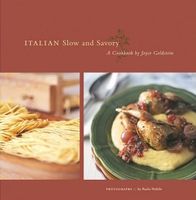Advertisement
Polenta
Published 2004
The word polenta means “porridge.” Today, it is usually associated with a hearty peasant dish made from cornmeal, although the same dish is also made—albeit more rarely—with flour milled from chickpeas, chestnuts, buckwheat, farro, or wheat berries.
Corn was introduced to Europe from Mexico in the sixteenth century, and some northern Italians quickly adopted it. It was first planted in the Veneto about 1530, and by the early seventeenth century its cultivation extended north to the Po River delta and Friuli and as far south as Lazio and Campania. The corn grew easily in soil that had previously produced meager crops. The Italians considered the grain exotic, so they called it granoturco, or “Turkish grain,” because, in their minds, exotic things inevitably came from Asia or the Middle East.

